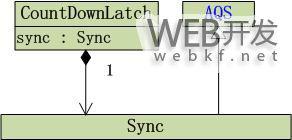Python多线程同步---文件读写控制方法
1、实现文件读写的文件ltz_schedule_times.py
#! /usr/bin/env python
#coding=utf-8
import os
def ReadTimes():
res = []
if os.path.exists('schedule_times.txt'):
fp = open('schedule_times.txt', 'r')
else:
os.system('touch schedule_times.txt')
fp = open('schedule_times.txt', 'r')
try:
line = fp.read()
if line == None or len(line)==0:
fp.close()
return 0
tmp = line.split()
print 'tmp: ', tmp
schedule_times = int(tmp[-1])
finally:
fp.close()
#print schedule_times
return schedule_times
def WriteTimes(schedule_times):
if schedule_times <= 10:
fp = open('schedule_times.txt', 'a+')#10以内追加进去
else:
fp = open('schedule_times.txt', 'w')#10以外重新写入
schedule_times = 1
print 'write schedule_times start!'
try:
fp.write(str(schedule_times)+'\n')
finally:
fp.close()
print 'write schedule_times finish!'
if __name__ == '__main__':
schedule_times = ReadTimes()
#if schedule_times > 10:
# schedule_times = 0
print schedule_times
schedule_times = schedule_times + 1
WriteTimes(schedule_times)
2.1、不加锁对文件进行多线程读写。
file_lock.py
#! /usr/bin/env python
#coding=utf-8
from threading import Thread
import threading
import time
from ltz_schedule_times import *
#1、不加锁
def lock_test():
time.sleep(0.1)
schedule_times = ReadTimes()
print schedule_times
schedule_times = schedule_times + 1
WriteTimes(schedule_times)
if __name__ == '__main__':
for i in range(5):
Thread(target = lock_test, args=()).start()
得到结果:
0
write schedule_times start!
write schedule_times finish!
tmp: tmp: tmp: tmp: [[[['1''1''1''1']]]]
11
1
1
write schedule_times start!write schedule_times start!
write schedule_times start!write schedule_times start!
write schedule_times finish!
write schedule_times finish!
write schedule_times finish!write schedule_times finish!
文件写入结果:
以上结果可以看出,不加锁多线程读写文件会出现错误。
2.2、加锁对文件进行多线程读写。
file_lock.py
#! /usr/bin/env python
#coding=utf-8
from threading import Thread
import threading
import time
from ltz_schedule_times import *
#2、加锁
mu = threading.Lock() #1、创建一个锁
def lock_test():
#time.sleep(0.1)
if mu.acquire(True): #2、获取锁状态,一个线程有锁时,别的线程只能在外面等着
schedule_times = ReadTimes()
print schedule_times
schedule_times = schedule_times + 1
WriteTimes(schedule_times)
mu.release() #3、释放锁
if __name__ == '__main__':
for i in range(5):
Thread(target = lock_test, args=()).start()
结果:
0
write schedule_times start!
write schedule_times finish!
tmp: ['1']
1
write schedule_times start!
write schedule_times finish!
tmp: ['1', '2']
2
write schedule_times start!
write schedule_times finish!
tmp: ['1', '2', '3']
3
write schedule_times start!
write schedule_times finish!
tmp: ['1', '2', '3', '4']
4
write schedule_times start!
write schedule_times finish!
文件写入结果:
以上这篇Python多线程同步---文件读写控制方法就是小编分享给大家的全部内容了,希望能给大家一个参考,也希望大家多多支持。
以上是 Python多线程同步---文件读写控制方法 的全部内容, 来源链接: utcz.com/z/318725.html





